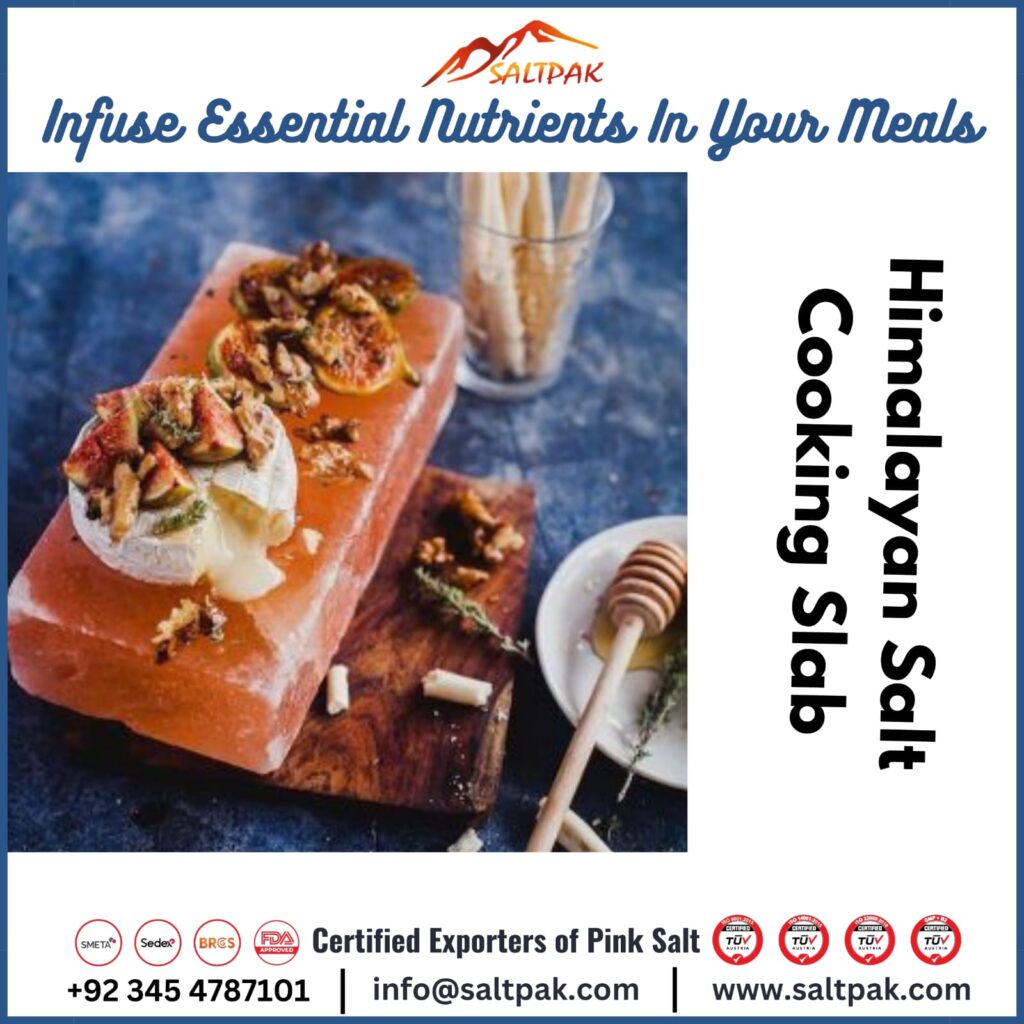There is a trend now a days that cooking on a Himalayan salt slab has become increasingly popular among culinary enthusiasts and health-conscious individuals alike. These beautiful pink slabs, harvested from the ancient salt mines of the Himalayan mountains, offer a unique way to prepare and present food. Here, we have presented the top 8 benefits of cooking on a Himalayan salt slab:
1. Enhanced Flavor:
One of the primary benefits of cooking on a Himalayan salt slab is that it enhances flavor. Himalayan salt has subtle and distinct flavor that it imparts to food. Unlike table salt, which can sometimes overpower a dish, Himalayan salt adds a mild, nuanced salty flavor. When we cook on the Himalayan salt slab, it not only seasons the food naturally but also eliminates the need for additional salt and enhances the overall taste.
2. Even Heat Distribution:
Another benefit is that it evenly distributes heat among food. Basically, Himalayan salt slabs are excellent conductors of heat, providing an even cooking surface. If you want to cook on Himalayan salt cooking slabs, it makes sure that whatever you are cooking, whether a steak, grilling vegetables or seafood, has equal amount of heat all over the place. So, you can be rest assured with the worry of undercooked or overcooked.
3. Natural Antimicrobial Properties:
Himalayan salt has natural antimicrobial properties, making it a hygienic cooking surface. The salt slab naturally inhibits the growth of bacteria and other microbes, ensuring that your cooking surface remains clean and safe. This is particularly beneficial when preparing raw foods like seafood and meat, where cross-contamination can be a concern.
4. Nutrient-Rich Cooking Surface:
Himalayan salt contains over 80 trace minerals, including calcium, magnesium, potassium, and iron. When you cook on a salt slab, some of these beneficial minerals are absorbed into the food, enriching your meals with essential nutrients. This makes cooking on a Himalayan salt slab not only flavorful but also a healthier choice.
5. Versatility of Himalayan Salt Slab:
Himalayan salt slabs are incredibly versatile and can be used for various cooking methods. You can use them on the stovetop, in the oven, on the grill, or even chilled for serving cold dishes. This adaptability makes the salt slab a valuable addition to any kitchen, allowing you to explore different cooking techniques and recipes.
6. Aesthetic Presentation:
The striking pink hue and crystalline structure of Himalayan salt slabs make them an attractive serving platter. Presenting your food on a salt slab adds a touch of elegance and sophistication to your dining experience. Whether you’re hosting a dinner party or enjoying a casual meal, serving food on a Himalayan salt slab is sure to impress your guests.
7. Eco-Friendly and Sustainable:
Himalayan salt slabs are a sustainable and eco-friendly cooking option. They are carved from natural salt deposits that are abundant and replenished over time. Unlike many modern kitchen gadgets made from synthetic materials, Himalayan salt slabs are a natural product that doesn’t harm the environment.
8. Long-Lasting and Reusable:
With proper care, a Himalayan salt slab can last for many uses. Unlike single-use cooking materials, salt slabs are durable and can withstand high temperatures. After cooking, simply wipe the slab clean and allow it to dry thoroughly before storing it. This longevity makes Himalayan salt slabs a cost-effective investment for your kitchen.

Tips for Using a Himalayan Salt Slab
To get the most out of your Himalayan salt slab, here are few tips for you to make things easier for you:
Heating the Himalayan Salt Slab:
Gradually heat the salt slab to avoid cracking. Start with low heat and increase it gradually to your desired cooking temperature.
Cleaning:
Do not use soap. Instead, scrub the surface with a damp sponge or brush. Rinse it quickly with water and dry it completely before storing.
Storage:
Store the slab in a cool, dry place to prevent moisture absorption, which can lead to cracking.
Cooking:
Avoid using highly acidic foods (like tomatoes and citrus) directly on the salt slab, as they can erode the surface.
